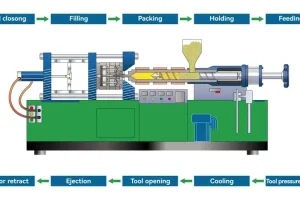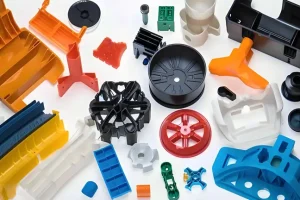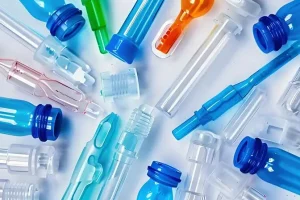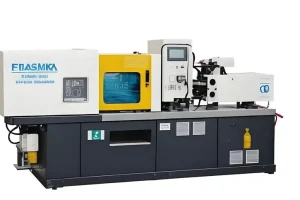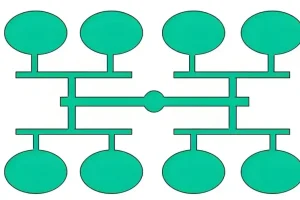Introduction
Plastic injection molding is a highly versatile and widely adopted manufacturing process that has revolutionized the production of plastic components across various industries. It involves injecting molten plastic material into a carefully designed mold cavity, allowing for the creation of complex and customized products with remarkable efficiency. This process plays a pivotal role in the automotive, electronics, medical, and consumer goods industries, among others, enabling mass production of high-quality parts at cost-effective rates.
This article explores the significance of plastic injection molding in modern manufacturing, delving into its advantages and diverse applications. From its ability to produce intricate designs to its contribution to sustainable practices, we will unravel the reasons behind the process’s widespread adoption in today’s industrial landscape. By examining the various industries that benefit from this technology, we gain insight into the versatility and impact of plastic injection molding in shaping the products we use every day.

Join us as we venture into the world of plastic injection molding, discovering how this process has become a game-changer in manufacturing and how it continues to drive innovation in the industry.
II.What is Plastic Injection Molding in Manufacturing?
Plastic injection molding is a highly versatile and widely used manufacturing process that involves shaping molten plastic material into various components and products. It is a key method in modern manufacturing, providing efficient and cost-effective solutions for producing a wide range of plastic parts.
Definition of Plastic Injection Molding: Plastic molding is a manufacturing technique that utilizes specialized machinery to inject molten plastic material into a mold cavity. The molten plastic takes the desired shape of the product, which is determined by the design of the mold. Once the plastic cools and solidifies, the mold opens, and the final injection-molded part is ejected for further processing or use.
Explanation of the Injection Molding Process Step-by-Step:
1.Material Preparation:
The process begins with selecting the appropriate plastic material for the specific application. Plastic pellets or granules are carefully chosen based on their properties, such as strength, flexibility, and chemical resistance.
2.Heating and Melting:
The chosen plastic material is fed into the injection molding machine’s hopper, where it undergoes a heating process. The injection molding machine’s barrel heats the plastic to its molten state, transforming it into a highly fluid liquid.

3.Injection:
Once the plastic is molten, the injection molding machine’s screw or plunger mechanism pushes the material forward into the mold’s cavity. The mold, which is precisely engineered to the desired shape of the final product, is typically made from steel or aluminum.
4.Cooling and Solidification:
Once the molten plastic fills the mold cavity, it begins to cool rapidly. Cooling ensures that the plastic solidifies and takes the shape of the mold. The cooling time varies depending on the material, part size, and complexity of the design.
5.Mold Opening and Ejection:
After the plastic has solidified, the mold opens, and the injection-molded part is ejected from the mold cavity. Ejection pins or mechanisms aid in the removal of the part from the mold.
Role of Injection Molding Machines in the Process:
Injection molding machines are the backbone of the plastic injection moulding process. They are precision instruments designed to control the injection process with accuracy and consistency. These machines are equipped with heating elements and powerful hydraulic systems that facilitate the melting and injection of the plastic material into the mold cavity.
Importance of Molten Plastic and Mold Cavity in Shaping the Product:
The molten plastic material’s fluidity is essential for filling the intricacies of the injection mold tool and cavity, allowing the production of complex and precise components. The mold cavity’s design dictates the final shape, texture, and features of the injection-molded part. High-quality mold tools and precise engineering ensure the desired dimensions and characteristics of the product are achieved.
In conclusion, plastic injection molding is a highly versatile and efficient manufacturing process that relies on molten plastic material and precisely designed injection mold machines and cavities to create a wide array of plastic components and products. The process’s use of injection molding machines ensures accuracy and consistency, making it a crucial method in modern manufacturing.

III. Advantages of Plastic Injection Molding processes
A. Mass Production Capability
1.Cost-effectiveness for Large-Scale Manufacturing:
Plastic injection molding excels in mass production due to its cost-effectiveness. Once the initial tooling and setup costs are covered, the cost per part significantly decreases with higher production volumes. This makes injection moulding an economically viable choice for large-scale manufacturing, allowing companies to produce thousands or even millions of identical parts at a lower unit cost.

2.High Productivity and Reduced Production Time:
Injection molding machines operate with remarkable speed and efficiency, resulting in rapid production cycles. The automated nature of the process ensures continuous and consistent output, reducing production time and allowing manufacturers to meet tight deadlines and respond promptly to market demands.
B. Design Flexibility and Complexity
1.Ability to Create Intricate and Customized Designs:
Plastic injection molding offers unparalleled design flexibility, enabling the production of complex and intricately detailed parts. The process can accommodate various part geometries, including undercuts, thin walls, and intricate features, providing designers with creative freedom to realize innovative product designs.
2.Comparison with Traditional Manufacturing plastic parts Processes:
Compared to traditional manufacturing methods, such as machining or die casting, plastic injection molding stands out for its ability to produce parts with intricate shapes and complex geometries in a single step. This reduces the need for secondary operations, streamlining the manufacturing process and saving time and resources.
C. Consistent Quality and Material Versatility
1.Automated Precision and Narrow Dimensional Tolerances:
Injection molding machines operate with high precision, ensuring consistent quality across all produced parts. The process’s automated nature minimizes human errors, leading to uniform dimensions, tight tolerances, and excellent part-to-part consistency.

2.Wide Range of Plastic Materials for Diverse Applications:
Plastic injection molding supports an extensive selection of plastic materials, each with distinct properties suitable for diverse applications. Manufacturers can choose from a variety of thermoplastic resins with specific characteristics, such as strength, flexibility, heat resistance, and chemical compatibility, to meet the requirements of different industries and products.
D. Environmental Sustainability
1.Safely Combining Plastics and Utilizing Waste Materials:
Plastic injection molding allows for the safe and efficient combination of different plastics during the molding process. This enables the use of recycled or reclaimed plastic materials, reducing waste and promoting a more sustainable approach to manufacturing.
2.Lower Environmental Impact Compared to Other Methods:
Injection molding generates minimal waste, as unused or excess plastic can be reground and recycled. Additionally, the process’s high efficiency and reduced energy consumption contribute to a lower overall environmental impact compared to other manufacturing techniques.
In conclusion, the advantages of plastic injection molding make it a highly favorable manufacturing process for a wide range of industries. Its mass production capability, design flexibility, consistent quality, and environmental sustainability have cemented its position as a go-to method for producing high-quality plastic components and products efficiently and cost-effectively.
V. Materials and Techniques in Plastic Injection Molding processes
A. Types of Plastic Materials
1.Considerations in Selecting Suitable Polymers:
In plastic injection molding, the choice of plastic material is critical in determining the performance and characteristics of the final product. Manufacturers must carefully consider various factors when selecting suitable polymers for their specific application. These considerations include the product’s intended use, environmental conditions, mechanical requirements, physical and chemical properties, compatibility, and desired aesthetics. Each type of plastic material possesses unique properties that make it suitable for specific applications, and understanding these properties is essential in making the right material choice.
2.Properties like Chemical Resistance and Physical Strength:
Different plastic materials offer distinct properties that cater to various application needs. For instance, engineering-grade plastics like ABS, nylon, and polycarbonate exhibit excellent mechanical strength and toughness, making them ideal for structural components. On the other hand, polypropylene and polyethylene are known for their chemical resistance, making them suitable for containers and chemical-resistant parts. Manufacturers must carefully assess the required chemical resistance, thermal properties, electrical conductivity, and other mechanical characteristics to ensure the chosen plastic material meets the product’s functional requirements.
B. High Volume Molding and Scientific Techniques
1.Significance of Scientific Molding for Consistent Quality:
Scientific molding is a precise and data-driven approach that optimizes the injection molding process to achieve consistent and repeatable results. By analyzing and understanding the various variables involved in the process, such as material properties, mold design, injection pressure, speed, and cooling time, manufacturers can fine-tune the process parameters to achieve the desired quality and dimensional accuracy of the injection-molded parts. Scientific molding allows for real-time monitoring and adjustments, leading to higher productivity, reduced scrap rates, and improved overall part quality.
2.Advantages of High Volume Production for Cost Savings:
High volume molding leverages the efficiency and automation of plastic injection molding machines to produce large quantities of parts in a shorter timeframe. The initial investment in tooling and setup costs can be quickly offset by the economies of scale achieved in high volume production. As the production quantity increases, the cost per part significantly decreases, resulting in substantial cost savings over time. This makes high volume molding an economically viable choice for products with consistent demand and long production runs.

In conclusion, the choice of plastic materials and the implementation of scientific molding techniques play pivotal roles in the success of plastic injection molding. By carefully selecting suitable polymers and understanding their properties, manufacturers can ensure the final product meets the required performance and durability standards. Additionally, high volume molding and scientific techniques optimize production efficiency and ensure consistent quality, making plastic injection molding a preferred method for cost-effective and reliable manufacturing of plastic components and products.
VI. The Fut ure of Plastic Injection Molding process
Plastic injection molding has been continually evolving to meet the changing demands of modern manufacturing. As technology advances and sustainability becomes a pressing concern, the future of injection molding promises exciting possibilities. Let’s explore the key aspects that shape the future of plastic injection molding:
A. Ongoing Advancements and Leading-edge Technologies
1.Current Trends and Innovations in Injection Molding:
In recent years, several trends have emerged to enhance the efficiency and capabilities of plastic injection molding. One prominent trend is the integration of Industry 4.0 technologies, such as IoT-enabled sensors and real-time monitoring systems. These technologies provide valuable data on machine performance, material characteristics, and production processes, enabling manufacturers to make data-driven decisions for optimized production and quality control.
Another innovation lies in multi-material and multi-shot molding techniques. Manufacturers can now create complex parts by combining different plastic materials or overmolding materials onto a base component in a single process. This advancement expands the design possibilities and functionality of injection-molded products, opening new avenues for innovation.

2.Future Possibilities and Potential Improvements:
Looking ahead, the future of plastic injection molding holds exciting possibilities. Continued advancements in material science may lead to the development of novel biodegradable and sustainable polymers, reducing the environmental impact of plastic products. Additionally, improved high-performance materials could enable the replacement of traditional materials like metals and ceramics in more demanding applications, further expanding the scope of plastic injection molding.
Moreover, additive manufacturing, or 3D printing, cnc machining is becoming increasingly integrated with design injection molding. This combination allows for the creation of complex tooling and molds, reducing lead times and enabling rapid prototyping. As 3D printing technologies continue to advance, it is likely to complement and enhance traditional injection molding processes.
B. Sustainable Manufacturing and Environmental Impact
1.The Role of Plastic Injection Molding in a Sustainable Future:
Sustainability has become a critical aspect of manufacturing, and plastic injection molding plays a significant role in achieving more environmentally friendly practices. Manufacturers are increasingly using recycled and bio-based plastics, reducing reliance on fossil-fuel-derived materials. This shift towards sustainable materials not only minimizes the environmental impact but also meets the growing demand for eco-friendly products.
2.Innovations to Reduce Waste and Promote Recycling:
Efforts to reduce waste and promote recycling are at the forefront of sustainable injection molding practices. Advanced technologies are being implemented to optimize material usage, minimize scrap, and streamline production processes. Additionally, closed-loop systems that recycle excess plastic during the molding process are gaining popularity, contributing to a circular economy.
Furthermore, collaborations between manufacturers and recyclers are becoming more prevalent. This ensures that end-of-life plastic products can be efficiently collected, processed, and reused as raw materials for new injection-molded products. Emphasizing sustainability not only aligns with environmental goals but also enhances a company’s reputation and market competitiveness.

In conclusion, the future of plastic injection molding is shaped by ongoing advancements in technology, materials, and sustainability. With the integration of leading-edge technologies, the potential for multi-material molding, and the increasing emphasis on environmental consciousness, plastic injection molding will continue to be a key player in modern manufacturing. As the industry progresses, the journey towards a more sustainable and innovative future for plastic injection molding is well underway.
Conclusion
Plastic injection molding stands as a cornerstone in modern manufacturing, offering numerous advantages and unparalleled versatility. Throughout this article, we have delved into the key aspects that make plastic injection molding a favored technique across industries.
Recap of the Advantages and Versatility of Plastic Injection Molding: Plastic injection molding’s mass production capability and cost-effectiveness make it a top choice for manufacturing high volumes of identical parts. Its design flexibility and ability to create intricate and customized designs set it apart from traditional manufacturing processes, unlocking endless possibilities for product innovation. The process’s consistent quality and material versatility ensure that products meet stringent standards and diverse application requirements. Moreover, plastic injection molding plays a vital role in addressing environmental concerns through sustainable practices like waste reduction and recycling, paving the way for a greener future.
Emphasis on the Process’s Vital Role in Modern Manufacturing: As technology and consumer demands rapidly evolve, plastic injection molding remains an indispensable process in the ever-changing landscape of modern manufacturing. Its ability to efficiently produce complex components with consistent quality and cost-effectiveness has cemented its place as a fundamental method in diverse industries. From automotive and electronics to medical and consumer goods, plastic injection molding plays a crucial role in shaping the products that enrich our lives.
Hope for Continued Advancements and Environmentally Conscious Practices: As we look to the future, we are excited by the ongoing advancements and innovations in plastic injection molding. Leading-edge technologies, such as IoT integration and multi-material molding, promise increased efficiency and design possibilities. The industry’s dedication to sustainability fosters hope for a future where environmentally conscious practices, such as the use of recycled materials and waste reduction, become standard in plastic injection molding.
In conclusion, plastic injection molding is more than just a manufacturing process; it is the backbone of modern production, driving innovation, efficiency, and sustainability. As we move forward, let us continue to embrace the advantages of plastic injection molding and work towards a future where environmentally conscious practices and cutting-edge technologies elevate this remarkable process to new heights. With a steadfast commitment to progress, plastic injection molding will remain a driving force in shaping the products and solutions of tomorrow.


